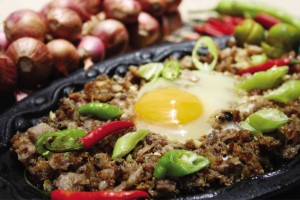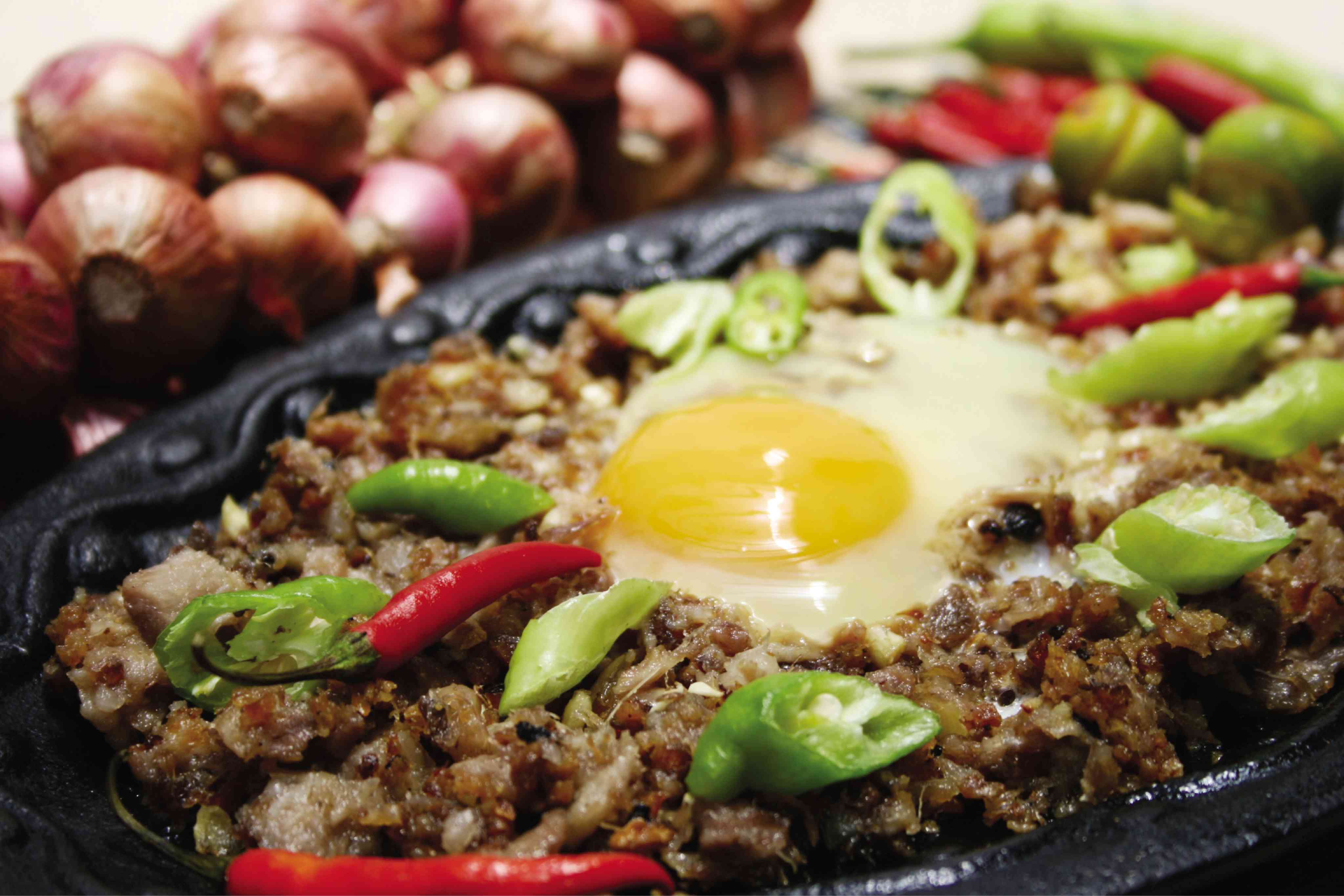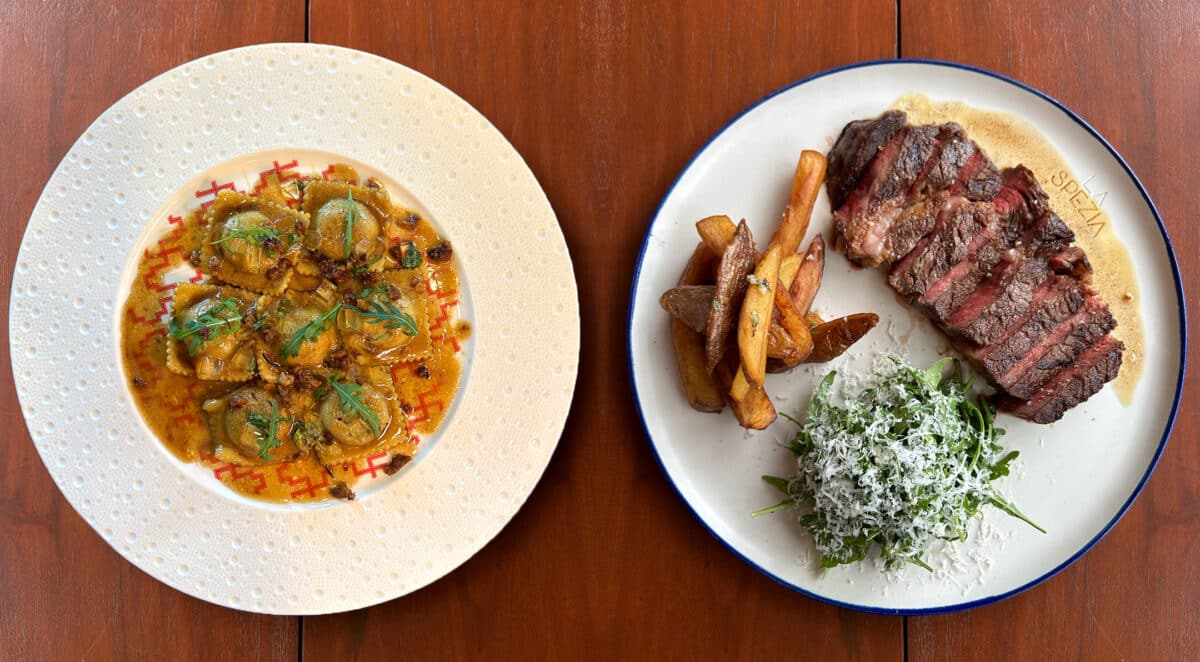
A Filipino celebration remains incomplete without lechon, and as we anticipate the new year, delectable renditions come to mind—clean-tasting and flavorful, even without a sauce.
Two of my favorites:
Hecky’s
I first tasted Hecky’s Lechon during a Christmas party at the Inquirer four years ago. It remains one of the cleanest, most pristine-tasting (if “pristine” could be used to describe pork) roasted pork meats I’ve tried, especially if you get it fresh from the oven.
Not only is it tasty it also melts in the mouth. It’s not fatty and is seasoned with just the right amount of salt, with the right blend of aromatics.
The vinegar that comes with it refreshes the palate, washing away the oil, complementing the meat perfectly.
A great dish starts with the freshest and finest ingredients. According to Carla Tabuena of Hecky’s, “Our lechon are organic; we use only free-range native pigs that feed on rice husks, coconut meat and whatever they can forage roaming around the hills, rice paddies and coconut forests of Quezon Province, Marinduque and Bicol.”
She adds, “We are the only one in the Philippines to use LPG ovens. Through convection our ovens literally melt the fat away (30-40 percent of pork fat), thus our slogan, ‘It’s the healthier choice!’”
The business has evolved. Now Hecky’s isn’t just roasting them, but also cooking its lechon in a number of ways.
My favorite is its sisig, Richie’s Dijamco’s (Carla’s brother-in-law) recipe—coarsely chopped, chunky pieces of slow roasted lechon meat, marinated in seasonings and stir-fried. Very tasty.
Sold frozen, finish it on a sizzling plate with an egg! Yum!
(Call 8626379, 8625208, 0922-8703737.)
General’s Lechon
This business came to be after Bryan and Lynett Ong visited San Carlos City, Negros Occidental, in 2006. On their visit, the couple tried the local lechon, a cross between those of Cebu and Negros.
Lynett couldn’t stop talking about the lechon they had, so Bryan brought home a lechonero from San Carlos, his hometown, to roast a pig for their party. It was a hit.
With a penchant for perfection, Bryan continued to tweak the recipe, and when I got to try it the first time, Ong

reminded me of how my taste buds recalled it to be: lemongrass, garlic, onions, spices and leeks make a merry mix—a bit Balinese (Guling Celing) and bit like my favorite, Porquito’s lechon from Davao.
Going beyond their original recipe, the Ongs have expanded their repertoire, to include:
Garlic Lechon—Much like the original but made with a lot more garlic, crushed and stuffed inside the pig’s cavity. The pig’s skin is also rubbed with garlic. Once sliced, garlic fills the air!
Chili-Garlic—Lots of garlic plus chilies make this the perfect happy-hour lechon. It is Bryan Ong’s favorite, and he makes sure to dip it in sinamak.
Curry—Infused with yellow Thai curry and coconut milk. This lechon is for the adventurous.
Ong says their pigs are the native black variety, free-range, given no injections or boosters.
(Call 0917-8-532466 or 8-lechon, 4086850, 9665099.)
With beer
The experts pair lechon with wine and beer.
Sherwin Lao, wine expert: “I prefer a creamy, full malolactic and oaked Chardonnay from either France, a Meursault from Burgundy, or a heavy full-bodied Napa version—the reason being, lechon is oily and you need a good acid backbone from a Chardonnay. The meat, while best with reds, cannot take the tannins from it. Heavy chards are best.”
(Call 6385025, 6385027.)
Joao Branquinho, Portuguese wine and beer importer: “Super Bock classic beer goes well because of the level of bitterness from the hops. Also, the good amount of carbonation from this beer keeps it active, which is good, as it balances the fat and richness of the lechon.
A lager behaves like pilsen—light-bodied, ideal to pair with pork. The level of alcohol of this beer promotes the breaking down of the meat during digestion.”
(Call 5857765, 0917-5768040.)
Adriano Steffanuti of iPhor Wines: “Generally in Italy we prefer to eat our porchetta, which is very similar to the lechon with a rich edible filling inside, with full bodied red wines, for instance a sangiovese (Chianti), corvina (Rosso Veronese), ribolla nera (Schioppettino).

“I would go for a red, but here in the Philippines, white wines have been paired successfully with lechon, mainly because fatty, oily, deep-fried or roasted food could go well with highly acidic white wines. The lechon skin, for example, could be tried also with a pinot grigio (Collavini) or a tocai friulano (Collavini).”
(Call iPhor at 0917-5094465.)
Raj Sadhwani of Booze On-Line, importer of over 30 types of beer: “I recommend Leffe Brune (Belgian beer—dark and medium bodied), goes very well with meat dishes. I normally have this with pork knuckle at Draft (similar flavors to lechon). The lechon’s heavy meat taste will definitely go well with this one.”
If you don’t like dark beer, he recommends Delirium Tremens, a Belgian Strong Ale bottled at 8.5 percent alcohol.
“Sweet on the front and slightly dry and bitter on the finish. I like the beer’s high alcohol content, as it can cut through the oiliness of the lechon. Also, the beer is light enough to wash down the palate. It is perfect for Christmas dinners.”
(Call Noemi at 8957179, 8906046.)
And of course, there’s San Miguel Beer. We need no expert to tell us that lechon and beer or wine can trick our taste buds into believing that every day is a holiday!
Happy New Year! Cheers!














































